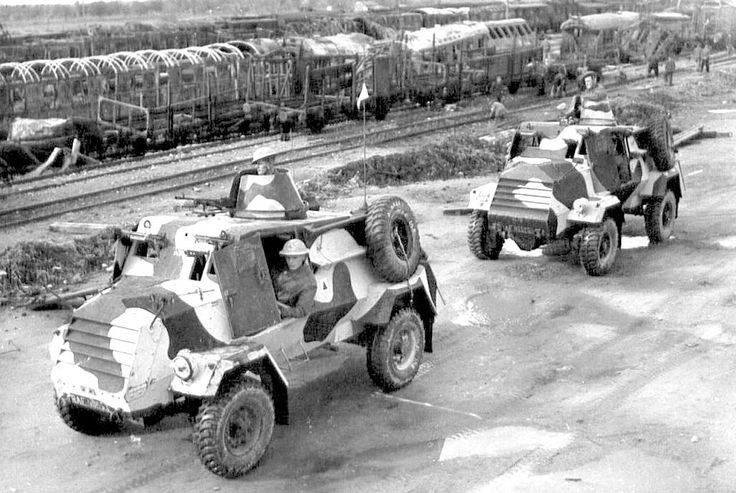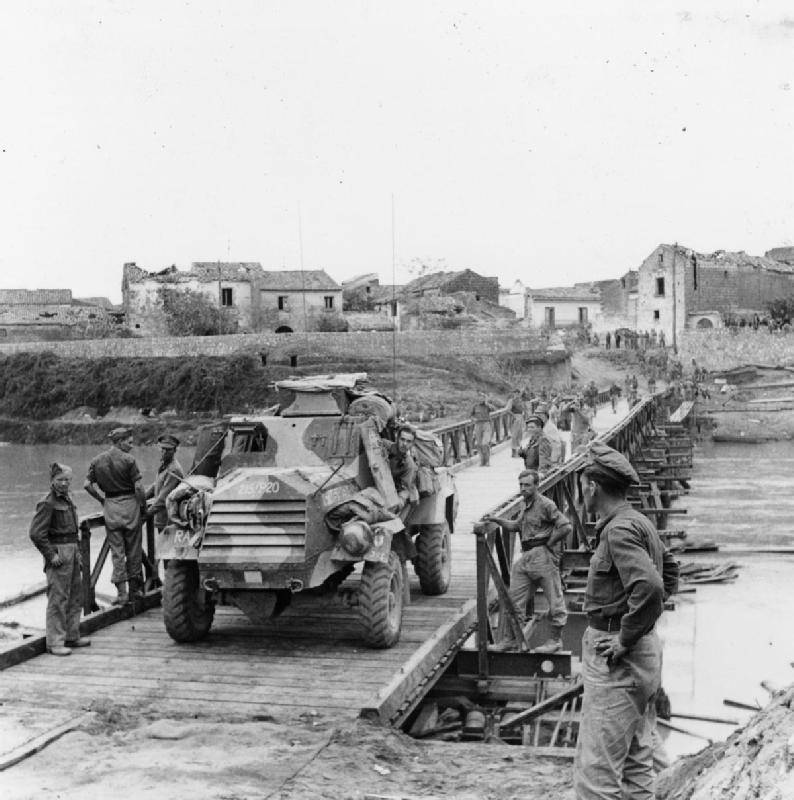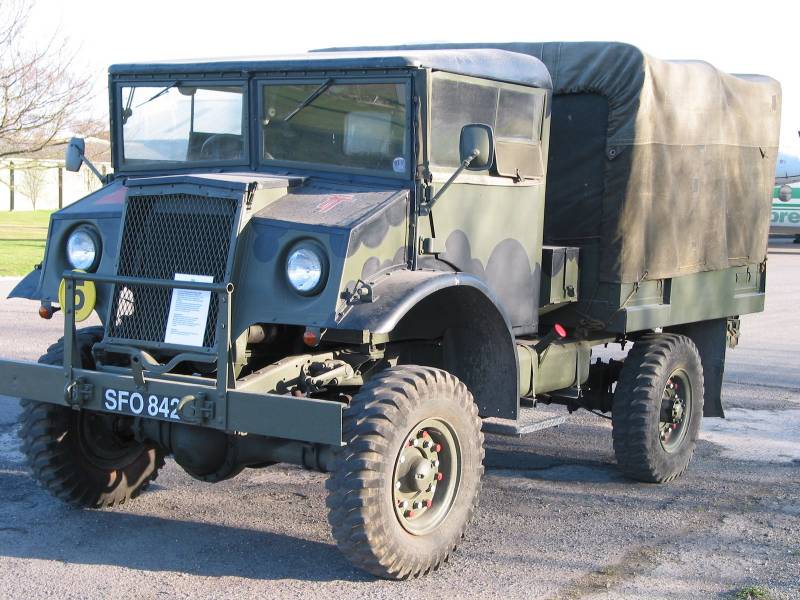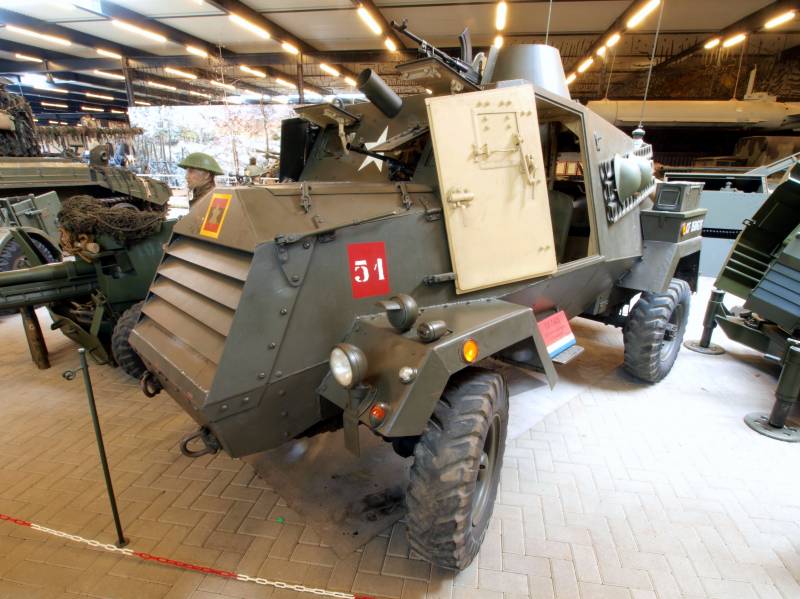Wheel armored vehicles of the Second World War. Part of 18. Armored car Otter Light Reconnaissance Car (Canada)
Among the light armored cars that were created in the years of the Second World War, we can particularly highlight the development of Canadian designers, who, as best they could, tried to help their country defeat the common enemy. One of the armored vehicles created in Canada was the Light Reconnaissance Car Otter (English Otter). This light reconnaissance armored car of Canadian design was released in a rather large series. From 1942 to 1945, the 1761 armored car of this type was assembled in the city of Oshawa in the province of Ontario, slightly less than 1000 of them were delivered abroad.
Work on the creation of this armored car started already in 1941, when the main task of the British Commonwealth troops was to protect the colonial possessions. By creating a combat vehicle, there were increased requirements for off-road maneuverability, mobility and maintainability. Canadian engineers representing General Motors of Canada proposed a design for an armored car built on the chassis of an army truck Chevrolet С15А. The essence of the project was to install an armored hull on an existing four-wheel drive chassis (wheel formula 4х4) of the truck. The draft of the new armored vehicle was approved, since if it was implemented, the Canadian military would receive a good alternative to the existing British counterparts. The new armored car was categorized as a Light Reconnaissance Car - a light reconnaissance vehicle. It should be noted that in the British army and its dominion armies, armored cars often performed the functions that motorcycles (Germany) or light tanks (USSR, USA) were involved in the armies of other states.
For the new armored car, Canadians did not begin to develop the original chassis, using the Chevrolet С15А light industry vehicle well mastered by industry as a basis. It was a 1,5-ton four-wheel drive truck with a wheel formula 4х4 and a wheelbase 2500 mm. During the war years, Canadians also created an armored personnel carrier on its base, which was almost completely analogous to the American M3A1, the machine received the designation C15TA Armored Truck, until the end of the war in Canada almost 4 thousands of this type of armored vehicles were assembled.
The new Canadian armored car "Otter" was distinguished by the presence of a riveted-welded hull, which was created by engineers of the Hamilton Bridge Company. The body of the armored vehicle was assembled from armor plates with a thickness from 6 to 12 mm. In order to increase its bulletproofness almost all the armor plates (with the exception of the lower part of the hull in the area of the suspension) were placed at rational inclination angles, which increased the thickness of the reduced armor. The layout of the “Otter” was classic - there was a engine compartment in front of the armored vehicle, then a control compartment was located, and in the middle and aft part there was a fighting compartment. On the roof of the hull housed a single turret, made in the shape of a truncated cone. An embrasure was made in front of the turret, which was intended to house the Bren 7,7 infantry machine gun. The front body armor plate also had an embrasure for installing a Boys anti-tank gun (13,97-mm); a smoke grenade launcher was installed to the right of it almost in the center of the body. Such a choice of weapons was standard for the British army. The crew of an armored car consisted of three people: the commander, the driver and the gunner. All the cars were radioed, the standard radio station No.19 was installed on them.
The undercarriage was inherited from a light truck, having received bullet-resistant tires of dimension 9,00x16 inches with a fairly developed tread. The front axle was controlled, while the wheels here, as well as on the rear axle, were single. In the suspension armored vehicles used leaf springs. The heart of the armored car was General Motors' 6-cylinder gasoline engine, which developed the maximum power of the 106 HP. The engine cooling system was fluid. The radiator was covered with armored blinds. The transmission included a 4-speed gearbox. The fuel supply was 30 gallons (113,6 liters), oils - 6,63 liters, coolant - 14,2 liters.
Tests of the new armored car were considered successful. When driving on the highway, the combat vehicle developed speeds up to 75 km / h, while possessing high road performance, surpassing even the British Humber armored car. Turn radius "Otter" was 14,6 meter. But the power reserve of the novelty was relatively small - only about 161 km. The reason was a high fuel consumption of one gallon per 8 miles (liter per 3,37 km). In addition, the armored car was distinguished by a rather high centering, which affected its stability. Despite the last two circumstances, the armored vehicle was put into service and put into mass production. The supply of armored vehicles by the military began in 1942 year.

In total, the Canadian army in Europe received 388 of such armored vehicles. They were used in the Royal Canadian Army Service Corps and Royal Canadian Engineers units in battles on the Western Front in the 1944-1945 years. Most of the armored vehicles got into the 1 units of the Canadian Army. Here they were initially tried to be used as pure reconnaissance armored vehicles. But the experience of real combat operations quickly showed that such use was unsuccessful due to the rather large dimensions of the armored car and its weak body armor. At the same time, the Otter showed itself much better as an observation vehicle. Therefore, at the final stage of the hostilities in Europe, Canadian armored vehicles were actively used by artillery observers.
In the future, most of the armored vehicles were handed over to the Allies. About a hundred more Otter armored vehicles served in Canada as reconnaissance vehicles. As of 1952, the Ottoman 45 was still counted in the Canadian army, but by November 1955, almost all of them were sent for recycling, since the necessary number of spare parts was not corny to them. The soldiers and officers of the Canadian army themselves were not thrilled with this combat vehicle, calling it the worst one that the army only received in the period from 1939 to 1945 a year.

Despite this, the armored car was actively used not only by the Canadian military, its geography was quite extensive. They were used by the armies of 9 countries on two continents. Even Great Britain used it, armored vehicles were used in the Royal Air Forces during battles in North Africa in the 1942-1943 years as an escort and patrol vehicle. Taking into account the weakness of his weaponry, the British field workshops equipped some of the 20-mm machines with an automatic cannon and a Vickers 7,71-mm machine gun for unification. In the postwar years, they continued to carry military service in the colonial possessions of Great Britain, the last of which were written off in the 1955-1956 years. Other operators of the Otter Light Reconnaissance Car armored car were: Belgium, the Netherlands, Greece, France, Indonesia, Israel, Jordan, Aden. Due to the comparative numbers and not the most active participation in the battles, up to now, about 20 combat vehicles of this type have been preserved, at least 15 of them have fallen into the collections of museums and are in very good condition.
Performance characteristics of Otter Light Reconnaissance Car:
Overall dimensions: length - 4,5 m, width - 2,16 m, height - 2,44 m.
Combat weight - 4,44 t.
Reservations - up to 12 mm (forehead housing).
The power plant is a 6-cylinder GMU carburetor engine with horsepower 106.
Maximum speed - up to 75 km / h.
Power reserve - 160 km (on the highway).
Armament - Boys 13,97-mm anti-tank rifle and Bren 7,7-mm machine gun.
Wheel formula - 4x4.
Crew - 3 person.
Information sources:
http://www.aviarmor.net/tww2/armored_cars/canada/ac_otter.htm
https://www.trucksplanet.com/ru/catalog/model.php?id=1333
Moschanskiy I. Armored vehicles of Great Britain 1939 — 1945 (part II) // Arm collection. 1999. No.02 (23).
Materials from open sources.


Information